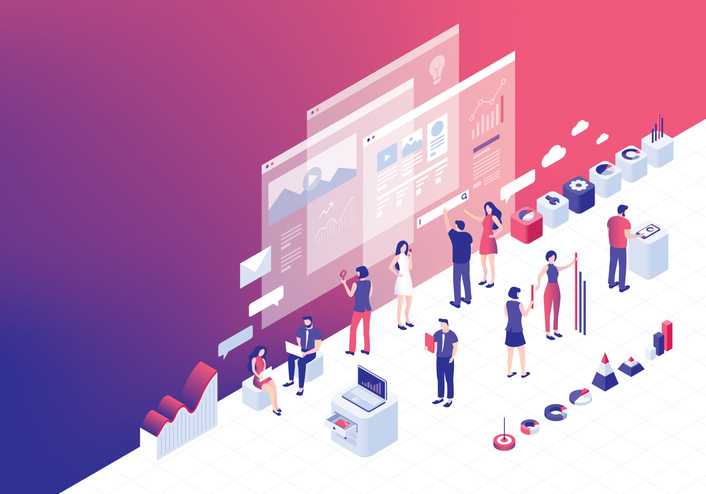Going digital: Optimising HR functions across borders

| About the Author |
| Paul Choo is the Vice-President of HR for Bridgestone Asia-Pacific. |
Today, digitalisation and advanced technologies have resulted in a highly competitive business environment. While many factors can elevate an organisation’s performance, one key driver – a foundational one – towards building a sustainable competitive advantage lies in the transformation of the HR function.
People management, talent identification, and positive employee engagement through an optimised HR function is crucial in ensuring that the business functions more seamlessly and with greater agility.
This is especially true for large organisations. Many have recognised this and undertaken a series of changes to better support their people and business.
In 2017, 45% of large companies and 51% of mid-sized companies increased their spending on tech solutions to improve their HR capabilities.
A unified and digitalised HR system is an important enabler to optimise HR functions. Companies that operate globally without a unified HR function typically end up with individual business units having their own set of operations and processes.
This can lead to a variety of problems and inefficiencies. For instance, a company that lacks a centralised HR framework to assess and manage talent across the region will lack visibility and find it immensely challenging to identify talent, understand their growth aspirations, or match them to the various business plans across the organisation.
In addition, the lack of a common framework for compensation and benefits can be a hindrance for the smooth transition of employees across different markets and entities.
A centralised system will not only provide companies a pool of global HR data to more accurately identify and match talent but also reduce duplication of efforts.
With the onset of the digital age, a globally integrated HR system can utilise digital capabilities and obtain analytics to enable informed and faster decision-making.
Organisations can ‘connect the dots’ to bring together core HR functionalities, from performance and goal setting, succession, compensation, learning, development, onboarding and recruiting within a single platform.
Not only does digitalising processes provide data-driven insights that affect workforce trends, it also unlocks time and cost savings. This is because all the information is stored in one location, making it easy to retrieve and compare across entities.
Furthermore, HR plays an important role in building a cohesive company culture, which is key to an organisation’s success. In multi-nationals, all employees of the company, regardless of their location or position should feel like they are part of the larger organisation.
This sense of belonging can translate into a rich experience for employees. A unified HR system with interactive tools, and newsletters, and that allows online collaboration is a powerful enabler to help foster this sense of ‘belonging’ and community among employees, to share the core values of the organisation and work towards common goals.
| Aglobally integrated HR system can utilise digital capabilities and obtain analytics to enable informed and faster decision-making. |
It was with these benefits in mind that Bridgestone China & Asia Pacific (BSCAP) has undertaken a multi-phase HR transformation exercise across this region that we expect will take four more years.
As a regional headquarter with 14 entities and 25,000 employees across 10 countries, the exercise was a monumental one as it involved moving all HR processes from a paper-based system with no common ways of working to a unified HR platform digitally integrated across the region.
This was made much more complex by the fact that several of our entities have been in operation for up to 50 years, with well-established HR processes and systems to support their own operations, hence resistance to change was expected.
To anchor the program, BSCAP established a set of shared values known as “TRACE” – Transparency, Respect, Accountability, Collaboration, and Embrace Change – to form the basis for expected behaviors, to achieve BSCAP’s goal to become ‘The Most Trusted Leading Brand’ in the region, and ultimately to become ‘Dan-Totsu’ in our industry (Dan-Totsu is the Japanese term for ‘the absolute and clear leader’) which is Bridgestone Group’s Global management goal. Today “TRACE” has become part of the region’s performance evaluation for all employees.
We also took a holistic approach in the transformation exercise, where alongside building out these leadership values and behaviors which we refer to as the “organisational software”, we introduced the “hardware” which consisted of HR products and services, such as a centralised performance assessment system which saw the movement of all information onto a single standardised digital platform.
Currently, the transformation is in its last phase, and will involve educating employees about these improved HR systems through learning modules and training programs.
While the scale of implementation was challenging, we believe that one key factor behind BSCAP’s successful transformation was the understanding of our organisation’s culture.
Prior to embarking on this initiative, we took time to study the culture, which allowed us to anticipate where the key challenges and roadblocks would be, for the project team to be better prepared to address them at each phase of the project.
This enabled the team to achieve consensus and align the needs and expectations of various in-market and global stakeholders as part of our change management.
Next: Paul Choo, Vice-President of HR for Bridgestone Asia-Pacific, highlights key learnings from his team’s transformation journey.



